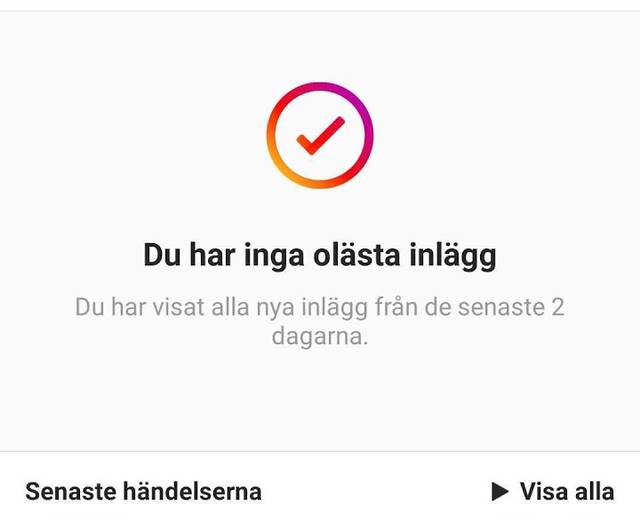The design we send out into the world will always have some type of effect on our surroundings, big or small, but an effect nonetheless. We want this effect to be positive, both for us and for the individual user, but how can we be sure that it is positive? For this reason, I personally think that the area of behavioral design and consciously designing for behavior change sometimes feels a bit... scary? When we design for behavior change, a responsibility comes with it that we must take seriously, and I have thought a lot about what this responsibility actually means for us designers. What exactly is our responsibility, and how does it manifest in our daily work? There are many questionable cases of behavioral design out there in the world, where no one really took responsibility, and the result may have been more or less ethically correct.
There is, of course, tons of reading and lists on the internet about how we can think about this responsibility and questions we can ask ourselves to ensure we are on the right track (read, among other things Beteendelabbet's blog post on responsible nudging). These posts are great to use as extra support when you are at a crossroads or want to question your design, but a deeper understanding is also required, an awareness of what you are designing and why. Let me start from the beginning.
A positive behavior change is simply a change that has a positive effect, a push in the right direction, also called a nudge. We can use design principles to create positive effects such as reduced food waste or increased environmental awareness. But what is a positive effect is not always black or white, and even if we mean well, it is easy to base positive effect on a positive result - “89% quit smoking after using our app.” A positive result, however, is not proof that we have used behavioral design responsibly.
There are many examples that fall under the category “Nudging Gone Bad.” A well-known one (it should be said that this example is not always mentioned as a typical bad nudging example) is when the Netherlands wanted to increase the number of organ donors in the country and chose that instead of actively having to register as an organ donor, residents were automatically registered. They had to deregister if they did NOT want to be organ donors. However, this had an unintended effect and resulted in more people than ever deregistering as organ donors. Even if the Netherlands possibly had a high number of organ donors in the country for a while, this change had long-term negative consequences, where potential future organ donors might have even deregistered in protest. Even if we think the end result of our design is for a good cause, we must understand the bigger picture. We must ensure that our goals also align with our users' goals to create a long-term relationship with our users. We cannot use behavioral design as a cover for the problems we have, where we harm, deceive, or manipulate our users to solve the problems, but we must work with design from the ground up. We must simply start by feeling empathy for our users.
"We must ensure that our goals also align with our users' goals to create a long-term relationship with our users.
Empathy for our users - how do we get it? Well, to gain empathy for the users, we must come into contact with them! I am talking about user research and qualitative data collection methods. Sure, we can come into contact with users through quantitative data as well, and it is useful in many different ways, but not for creating empathy. We want to meet, listen to, and see our users for real! User research not only creates value in the form of insights and knowledge about how our services are used, but it also creates empathy. We get a face to our users. Conduct interviews, usability tests, diary studies, observations, or other qualitative methods. Then you can understand what makes your users frown, laugh, or throw their phone in frustration. We must feel with the user, understand their problems and situation. To get a deeper picture - think about what users do, how they do it, and why they actually do it, and try to dig beyond your own assumptions to understand what is really happening (here you can read more about the What - How - Why method). The choice of method to create empathy depends, of course, on the specific context, but we want to experience our service from an outside perspective. This means that it is important to choose a method that works in the context and gives us as true a picture of the real usage as possible.
"User research not only creates value in the form of insights and knowledge about how our services are used, but it also creates empathy."
Are our users aware of how using our service affects them? Take, for example, infinite scroll on Instagram. I sit for far too long scrolling through that feed, and without a stop signal, time easily disappears, and I don't reflect on my use of the app. It can be difficult for a user to perceive this type of “manipulation” - it was difficult for me, at least. I wasn't aware of how much time I spent on Instagram or other social media until my phone started tracking my screen time. To find out what effect your service has on your users, you can't always ask the user directly. Instead, think about how you can find clues and dig deeper into the data to understand how your service is really used. Perhaps you would get more reliable and fair information if you complement interviews with observations?
And who should drive this work to create empathy and make empathy part of responsible design? Is it the organization or the designer? As a designer, you have the knowledge in this area, and hopefully, you already have the user in focus and don't need to spend a lot of time creating empathy but just expand your perspective a bit. Consider where your and your organization's ethical boundaries lie so that you can understand when you are approaching them or maybe even have crossed them. Also, work on conveying empathy for the users within the organization to make it easier to discuss the impact your services have in the short and long term. I also believe that we as designers should learn from how research and education in design and UX work with ethical issues. Ethical perspectives are actively discussed there, both regarding method and tool choices but also the possible consequences a result can have. This is something we as designers can take into the workplace and continue to discuss to lead the development towards responsible design together.
"Consider where your and your organization's ethical boundaries lie so that you can understand when you are approaching them or maybe even have crossed them."
For an organization that does not have the same background in the subject or the same goals as a designer, a conflict of interest can easily arise. At the organizational level, there is greater pressure to, for example, meet budget goals or increase growth, and naturally, there is not the same openness to spending time on ethical issues. But again, driving work for increased empathy is about thinking ahead and having a long-term approach, where we not only focus on maximizing our numbers but also on preventing future churn. We want sustainable usage. Let me go back to the Instagram example. Even when I became aware of my wasted time on Instagram, I didn't stop using Instagram immediately. But my trust in the service decreased over time, and I developed techniques to combat infinite scroll. If we exploit design principles in a way that is harmful to the user, users will eventually:
How long it takes, I don't know; I haven't uninstalled Instagram yet. But when we ourselves are in the situation where we are choosing among our design principles, we must make a trade-off. How far are we willing to go to get the user to do what we want? What is a healthy and ethical use of our app? It helps, of course, if we have already thought along these lines and actually have an idea of where we stand. Because it is not behavioral design itself that is inappropriate, it is how we choose to use it. Instagram uses infinite scroll to make me spend time on their app that I don't really want to spend there. At the same time, there are services like Karma, which sells leftover food at half price, and uses design principles like scarcity by writing “1 left,” which I don't perceive as manipulative at all because it also helps me understand the availability of the food I can buy at the moment.

This is a subjective question, but if the design principles we use to achieve a desired effect align with why the user uses our app, we can achieve sustainable usage and a positive effect without the user feeling exploited or deceived. If we have empathy for the users and understand them, we can more easily understand what users consider ethical or not, and what makes a design principle behavioral design and not a dark pattern. Maybe that's why Instagram actually introduced an incentive to stop scrolling: “You’re all caught up.”

Think about where you stand on the issue, how far you are willing to go, and what the alternative is to not trying to achieve a positive effect and what costs this brings in the long term. Back to the example of organ donation, what would have happened if we had gained empathy through user research before taking action? We can only guess, but maybe we would have found a way that not only increased the number of organ donors but also reduced the number of deregistrations. Regardless, my point is - if we feel empathy for our users, we will want to take responsibility for creating behavior changes that are truly positive!
In conclusion, empathetic behavioral design is about understanding and aligning with the needs and goals of your users. It requires a deep understanding of user behavior, gained through qualitative research and direct interaction with users. By setting ethical boundaries and ensuring that your design principles align with the users' best interests, you can create sustainable and positive behavior changes. This approach not only benefits the users but also builds long-term trust and loyalty towards your service or product. By setting ethical boundaries and ensuring that your design principles align with the users' best interests, you can create sustainable and positive behavior changes. This approach not only benefits the users but also builds long-term trust and loyalty towards your service or product.
Empathetic behavioral design is about more than just achieving positive results; it's about creating meaningful and ethical experiences that benefit both users and businesses. By prioritizing empathy, conducting thorough research, and setting clear ethical guidelines, you can design products and services that drive positive behavior changes and build long-term trust with your users.
Remember, the goal is to create designs that not only meet business objectives but also enhance the well-being and satisfaction of your users. By taking responsibility for the impact of your designs and striving for ethical and empathetic practices, you can create a positive and lasting effect on the world.
Happy designing!